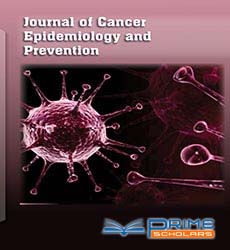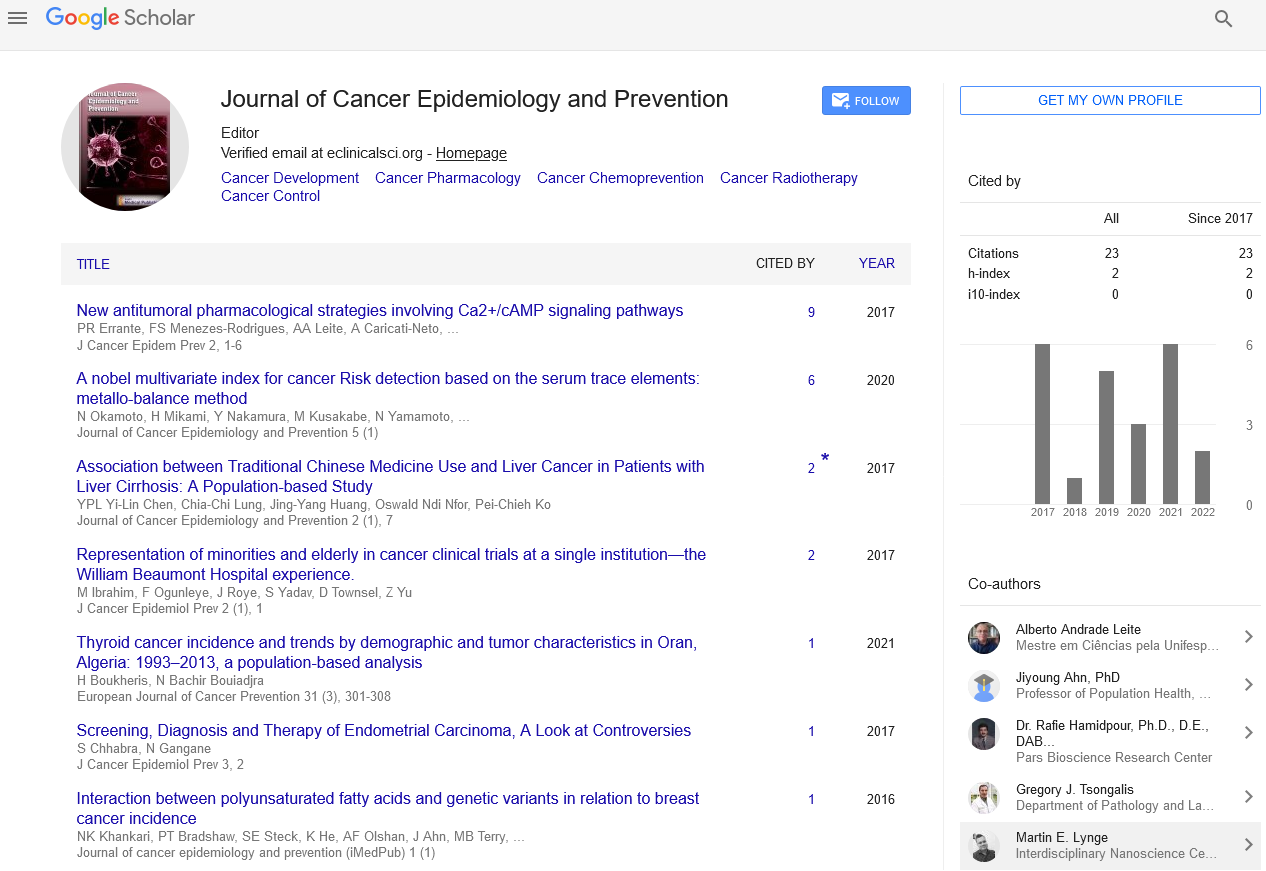Commentary - (2025) Volume 10, Issue 1
Understanding Breast Cancer: Causes, Symptoms, Diagnosis, and Treatment
Dipak Mukherje*
Department of Chemotherapy, University of Minnisota, USA
*Correspondence:
Dipak Mukherje, Department of Chemotherapy, University of Minnisota,
USA,
Email:
Received: 15-Mar-2024, Manuscript No. IPJCEP-24-19206;
Editor assigned: 18-Mar-2024, Pre QC No. IPJCEP-24-19206 (PQ);
Reviewed: 01-Apr-2024, QC No. IPJCEP-24-19206;
Revised: 24-Mar-2025, Manuscript No. IPJCEP-24-19206 (R);
Published:
01-Apr-2025, DOI: 10.36648/ipjcep.10.1.38
Description
Breast cancer is one of the most prevalent forms of cancer affecting women globally. It occurs when abnormal cells in the breast tissue begin to grow uncontrollably, forming a tumor. While breast cancer primarily affects women, it can also occur in men, albeit much less frequently. Understanding the causes, symptoms, diagnosis, and treatment options for breast cancer is crucial for early detection and effective management.
Causes of breast cancer: The exact cause of breast cancer remains unknown, but several risk factors can increase an individual's likelihood of developing the disease. These risk factors include:
• Genetics: Inherited mutations in certain genes, such as BRCA1 and BRCA2, significantly increase the risk of developing breast cancer.
• Family history: A family history of breast cancer, especially in first-degree relatives, can increase the risk.
• Hormonal factors: Exposure to estrogen over a prolonged period, such as early menstruation, late menopause, or hormone replacement therapy, can increase the risk.
• Lifestyle factors: Obesity, excessive alcohol consumption, lack of physical activity, and smoking have been linked to an increased risk of breast cancer.
Symptoms of breast cancer: Breast cancer may present with various symptoms, although some individuals may not experience any symptoms in the early stages. Common signs and symptoms of breast cancer include:
• A lump or thickening in the breast or underarm: This is often the most noticeable symptom.
• Changes in breast size or shape: Such as asymmetry or dimpling of the skin.
• Nipple changes: Including nipple inversion, discharge, or redness.
• Breast pain or tenderness: Although not always indicative of cancer, persistent pain should be evaluated by a healthcare professional.
• Swelling or irritation of the breast skin: Sometimes resembling the texture of an orange peel.
It's important to note that these symptoms can also be caused by non-cancerous conditions, but any changes should be promptly evaluated by a healthcare provider.
Diagnosis of breast cancer: Diagnosing breast cancer typically involves a combination of imaging tests, such as mammography, ultrasound, and MRI, as well as a biopsy to examine a sample of the breast tissue. Additional tests, such as blood tests and genetic testing may be performed to assess the extent of the disease and determine the most appropriate treatment approach.
Treatment options: The treatment for breast cancer depends on various factors, including the stage of the cancer, the type of breast cancer, and the patient's overall health and preferences. Treatment options may include:
• Surgery: To remove the tumor, either through lumpectomy (removing the tumor and a small margin of surrounding tissue) or mastectomy (removing the entire breast).
• Radiation therapy: Using high-energy beams to destroy cancer cells or shrink tumors.
• Chemotherapy: Using drugs to kill cancer cells or stop them from growing.
• Hormone therapy: Blocking the effects of estrogen or progesterone on breast cancer cells.
• Targeted therapy: Drugs that specifically target certain molecules involved in cancer growth.
Conclusion
Breast cancer is a complex disease that requires early
detection and comprehensive treatment for optimal
outcomes. While significant progress has been made in the
diagnosis and treatment of breast cancer, ongoing research is
essential to improve outcomes and reduce the burden of this
disease. Regular breast self-exams, clinical breast exams, and
mammograms can help detect breast cancer at an early stage
when treatment is most effective. If you have any concerns
about breast health or notice any changes in your breasts,
don't hesitate to consult with a healthcare professional. Early
detection saves lives.
Citation: Mukherje D (2025) Understanding Breast Cancer: Causes, Symptoms, Diagnosis, and Treatment. Am J Cancer Epidemiol Prev. 10:38.
Copyright: © 2025 Mukherje D. This is an open-access article distributed under the terms of the Creative Commons Attribution License, which permits unrestricted use, distribution, and reproduction in any medium, provided the original author and source are credited.

